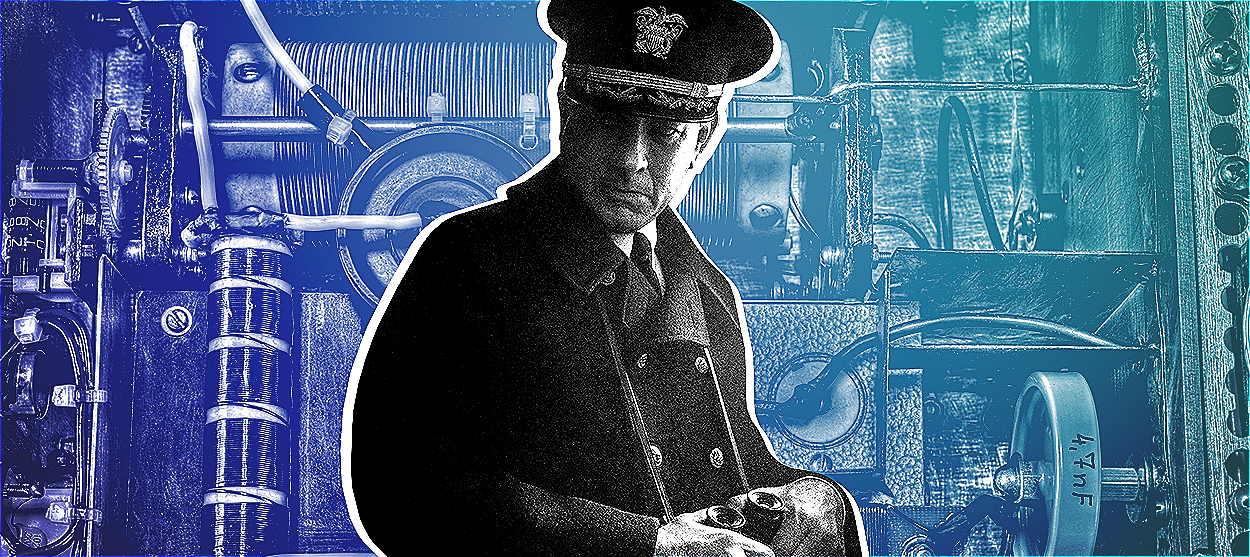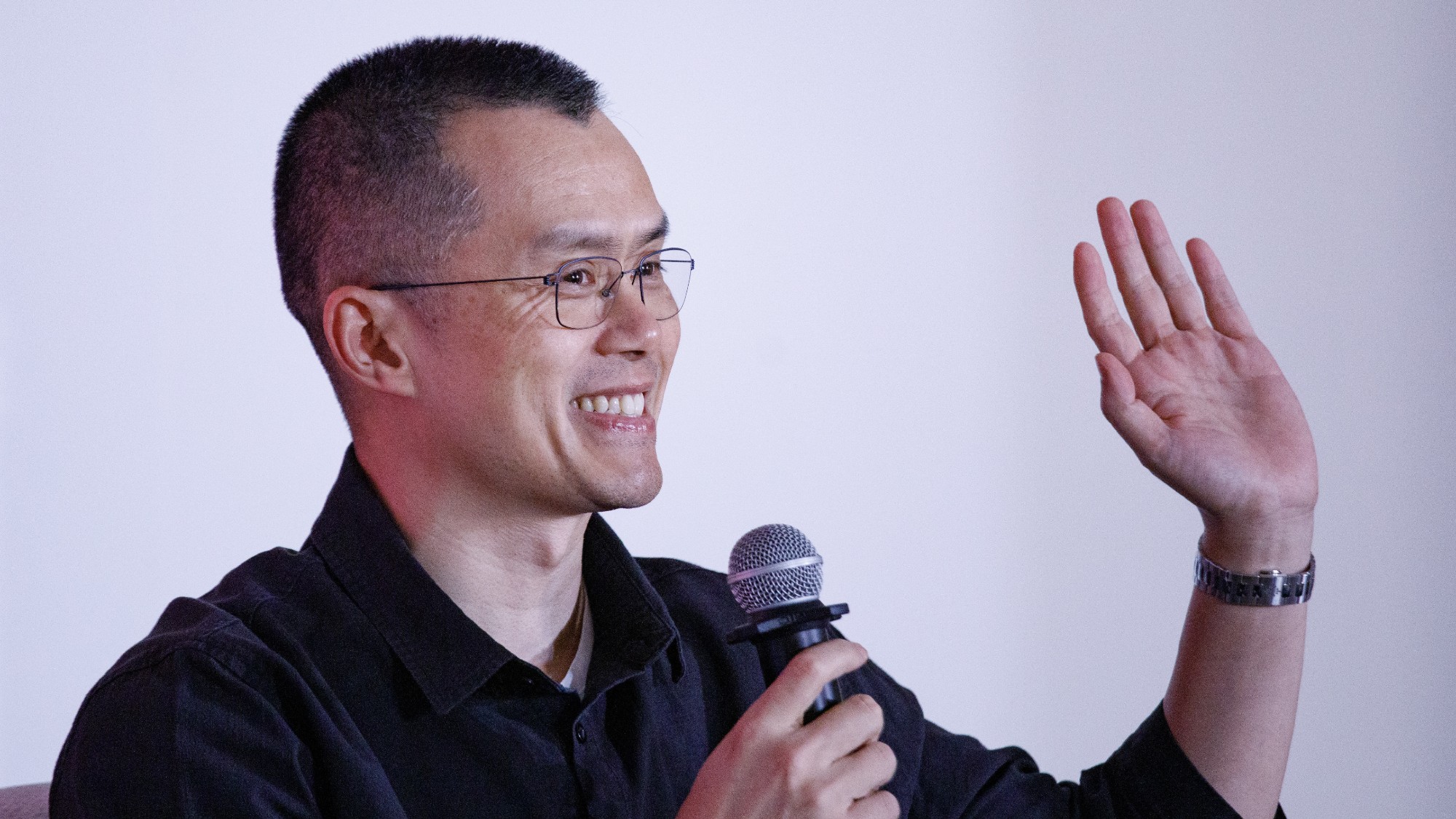The techno-thriller goes old-school
Greyhound, Ford v Ferrari, and why we're so terrified by old technology


No one expected the future to be quite this ... well, boring. We were promised jet-packs and space elevators, bionic eyes and walkie-talkies implanted in our wrists. Instead we got the mundane convenience of cell phones, drone warfare, search engines, and Uber Eats. The 21st century is not turning out to be nearly as exciting as the movies had led us to believe.
What is exhilarating, though, is to relive what life was like before our fandangled present. A new crop of technothrillers are doing just that: mining old technologies for adrenaline rushes, rather than imagining future ones. The World War II battleship drama Greyhound, out today on Apple TV+, is just the latest example of a script that finds the sort of thrills in a near-past that were previously found in the near-future, confirming that it is the absence of technology that now scares us the most — not what it might evolve into.
Set during 1942, in the early days of America's entry into World War II, Greyhound tells the story of an Allied convoy being set upon by German U-boats during the Battle of the Atlantic. Almost the entirety of the film is spent in the bridge of one destroyer, the USS Keeling, where United States Navy Commander Ernest Krause (played by Tom Hanks, who also wrote the script) seeks to outwit and outmaneuver his counterpart aboard the Graue Wölfe. The film is based on the 1955 novel The Good Shepherd by C. S. Forester, which, though fictional, is "deeply researched and noted for its accurate depiction of naval warfare," Smithsonian Magazine writes.
The Week
Escape your echo chamber. Get the facts behind the news, plus analysis from multiple perspectives.

Sign up for The Week's Free Newsletters
From our morning news briefing to a weekly Good News Newsletter, get the best of The Week delivered directly to your inbox.
From our morning news briefing to a weekly Good News Newsletter, get the best of The Week delivered directly to your inbox.
This obsession with period details effectively carries over to the film. As part of a 37-ship convoy, the Keeling (which uses the call sign "Greyhound") frequently communicates with its counterparts using signal lamps, which are basically bright lights used to flash messages in Morse code across open water (today, we call them text messages). While radio calls are possible, the U-boats are able to intercept communications — or commandeer them, as the smack-talking captain of the Graue Wölfe often does. These might have been quaint period details, except that director Aaron Schneider turns them into points of tension, like when it takes agonizing moments to convey messages from the Keeling's combat information center, where officers are interpreting sonar, to the bridge — time that, when fighting an invisible enemy, is quite literally a question of life and death. You won't watch a more poorly-timed sneeze in a movie this year.
Additionally, ample attention is given to the janky technology used for locating the U-boats, stressing the overwhelming threat that the convoys faced. While being stalked, the Allies were forced to rely on hydrophones to literally listen for the sound generated by U-boat propellors — a sound that could be masked by the noise of nearby friendly ships, or faked by decoys. Rapid battle maneuvers for targeting the subs had to be drawn out on plotting boards, and confirmation of a kill meant scanning rough waves for a telltale oil slick. The torturously basic technology — all of it analog — is as much an enemy, in the eyes of a 21st century audience, as the Axis attackers. While we know, to a degree, how the story will end since it's inspired by historical fact, the difficult machinery is what gets our pulse up more than some grander threat to the Americans. When the heroes find success, it is as much for overcoming the limits of their technology as anything else.
Greyhound, though, is far from the first film to exploit the inherent tension of prone-to-fail early mechanics. Last year's Ford v Ferrari also took a story with a fairly knowable outcome (based as it is on the true story of the 1966 24 Hours of Le Mans race in France) and used the technology of mid-century auto racing to heighten tension: the suspense of a potentially deadly brake failure looms throughout the film. (As if emphasizing the absurdity of the threat the groundbreaking engineering involved, a faulty door is fixed at one point by a good bang of a mallet). And while brake failure isn't unique to 1960s auto racing by any means, the "nerve-wracking technical glitches," as Slate called them, are why its race scenes are nailbiters, even more than the actual stakes of the competition.
First Man, the 2018 film recounting the effort to send Neil Armstrong and Buzz Aldrin to the moon, likewise uses a known story and cranks up the tension by emphasizing how truly monumental a feat it was using the technology, or lack thereof, available to NASA in the 1960s. The film only works at all because it is "grounded in the tension between technology that's almost laughably fragile (the astronauts really do seem as if they're going up in tin cans)," wrote Vulture in its review at the time. Like Greyhound and Ford v Ferrari, there is an almost pedantic obsession with getting the period details exactly right: the sound designers, for example, tried to authentically replicate what going to space would have sounded like. In fact, all these films stress the limits of their technology largely through sound, the way the rev of a car engine, the rattle of a rocket, or the pips of sonar are exaggerated to the audience, stressing the mechanistic — and thereby prone to failure — nature of the vehicles in question.
A free daily email with the biggest news stories of the day – and the best features from TheWeek.com
Notably, none of these movies would work if they took place today. While there are still wars being fought, cars being built, and advances to space travel being made, the computer era, with all its certainties and simulations and precautions, feels somehow safer and simpler than the Wild West days of cruder technologies. Just as the cell phone has ruined the horror movie (why go in the spooky attic when you can just call for help?), the computer, counterintuitively, has ruined the technothriller. It was so much more exciting before we were actually good at this stuff.
Then again, it's all relative, right? From the smug perch of 2020, it can look like we have it all figured out compared to the horrors of the Dark Ages before computers and GPS and autonomous cars. But today's mundanity is tomorrow's technothriller; by 2080, who knows how horrifyingly backwards we'll look now.
Jeva Lange was the executive editor at TheWeek.com. She formerly served as The Week's deputy editor and culture critic. She is also a contributor to Screen Slate, and her writing has appeared in The New York Daily News, The Awl, Vice, and Gothamist, among other publications. Jeva lives in New York City. Follow her on Twitter.
-
 The elite falcon trade in the Middle East
The elite falcon trade in the Middle EastUnder the Radar Popularity of the birds of prey has been ‘soaring’ despite doubts over the legality of sourcing and concerns for animal welfare
-
 A running list of the international figures Donald Trump has pardoned
A running list of the international figures Donald Trump has pardonedin depth The president has grown bolder in flexing executive clemency powers beyond national borders
-
 Mixed nuts: RFK Jr.’s new nutrition guidelines receive uneven reviews
Mixed nuts: RFK Jr.’s new nutrition guidelines receive uneven reviewsTalking Points The guidelines emphasize red meat and full-fat dairy
